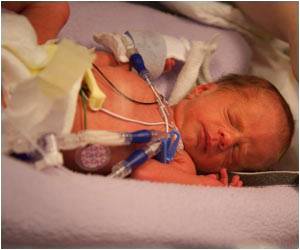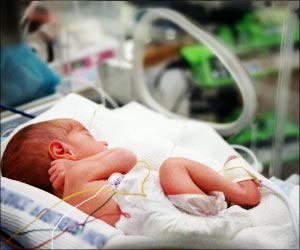- A new method has been developed that allows premature babies to breathe independently
- It uses pure (100%) oxygen to initially ventilate the baby, which stimulates breathing
- This allows the baby to breathe without artificial respiratory support
- This method could save the lives of numerous premature babies
Read More..
Study Team
The study was jointly led by Dr. Arjan te Pas, MD, PhD and Dr. Stuart Hooper, PhD. Dr. Arjan te Pas is a Neonatologist and Professor of Perinatal Transition and Neonatal Resuscitation in the Department of Pediatrics at Leiden University Medical Center, Leiden, The Netherlands. Dr. Hooper is a Professor of Obstetrics & Gynecology at Monash University, Melbourne, Australia. He is also a National Health and Medical Research Council (NHMRC) Principal Research Fellow and Deputy Director of the Ritchie Center at the Hudson Institute of Medical Research, Clayton, Victoria, Australia.The lead author of the paper was Dr. Janneke Dekker, PhD, who was formerly a doctoral student at Leiden University Medical Center and is currently a Postdoctoral Scientist in Fetal and Neonatal Health at the Ritchie Center, Hudson Institute of Medical Research, Clayton, Victoria, Australia.
Key Features of the Study in Premature Rabbits
- 26 premature rabbit kittens having breathing difficulties, who were on non-invasive breathing support, were assigned to the following two groups:
- Group 1: This group received 21 percent oxygen (normal oxygen content of air) via a facemask
- Group 2: This group received 100 percent oxygen via a facemask
- Administration of pure (100%) oxygen immediately after birth resulted in a more stable and better rate of breathing
Key Features of the Study in Premature Human Babies
- 52 premature babies were randomly assigned to the following two groups:
- Group 1: This group initially received 30 percent oxygen via a facemask
- Group 2: This group initially received 100 percent oxygen via a facemask
- The oxygen content of the babies’ blood was measured by a pulse oximeter
- The oxygen content of the blood was compared to the normal internationally recommended reference range
- The oxygen flow was subsequently adjusted to maintain blood oxygen levels within the reference range
- The premature babies who received pure (100%) oxygen exhibited higher breathing rate and better oxygenation of the blood
- This eliminated the need for positive pressure artificial ventilation
A Word of Caution about Using Pure Oxygen
It should be noted that although 100 percent oxygen was found to be superior to normal oxygen in the present study, caution needs to be exercised while using pure oxygen. This stems from the fact that 100 percent oxygen results in hyperoxia (high blood levels of oxygen), which is harmful for the body as it can cause tissue damage. Therefore, once the baby has been stabilized and has started to breathe normally, the oxygen flow should be slowly decreased until normal levels are reached.Concluding Remarks
Dekker says: “This clinical trial was not designed to demonstrate any significant differences in clinical outcomes, but rather provide knowledge on one of the factors that could improve breathing effort at birth. The next step will be to combine this new technique into a bundle of care and compare the outcome to current clinical practices.”Arjan te Pas concludes: “The finding that oxygenation is a dominant driver for breathing effort at birth is exciting as this offers the possibility to be more successful in supporting preterm infants in a non-invasive manner. The knowledge gained from this research could help us design future studies on improving the effectiveness of the use of oxygen at birth, without increasing the risks that are associated with hyperoxia.”
Funding Source
The study was funded by the National Health and Medical Research Council (NHMRC), Canberra, Australia and the Victorian Government’s Operational Infrastructure Support Program, Department of Health and Human Services, Melbourne, Victoria, Australia.Reference:
- The Effect of Initial High vs. Low FiO2 on Breathing Effort in Preterm Infants at Birth: A Randomized Controlled Trial - (https://www.frontiersin.org/articles/10.3389/fped.2019.00504/full)
Source-Medindia












